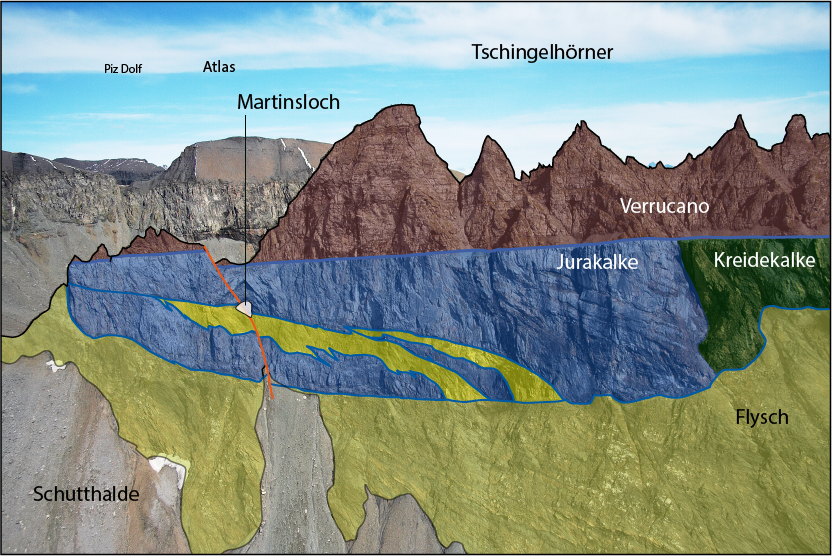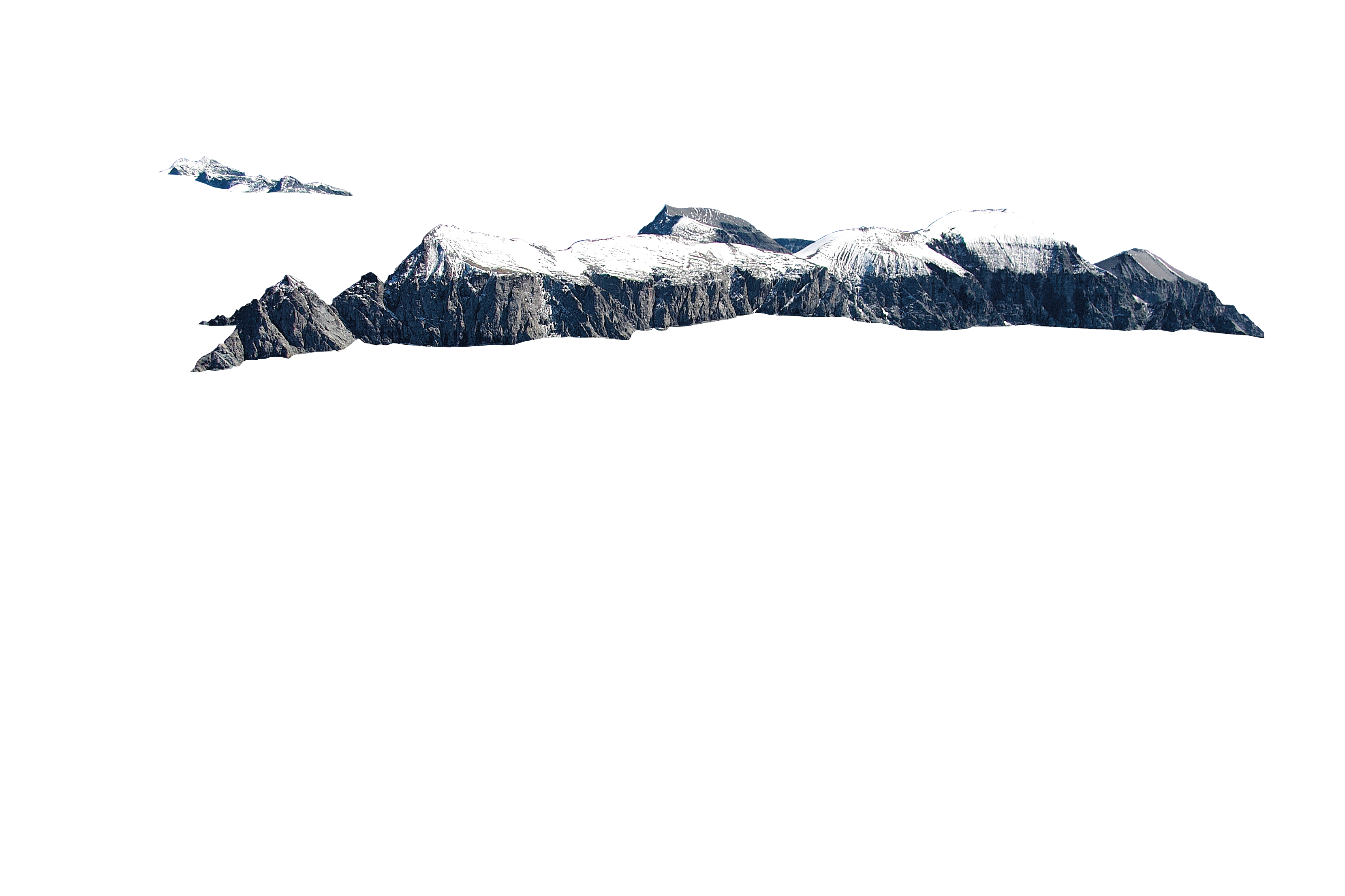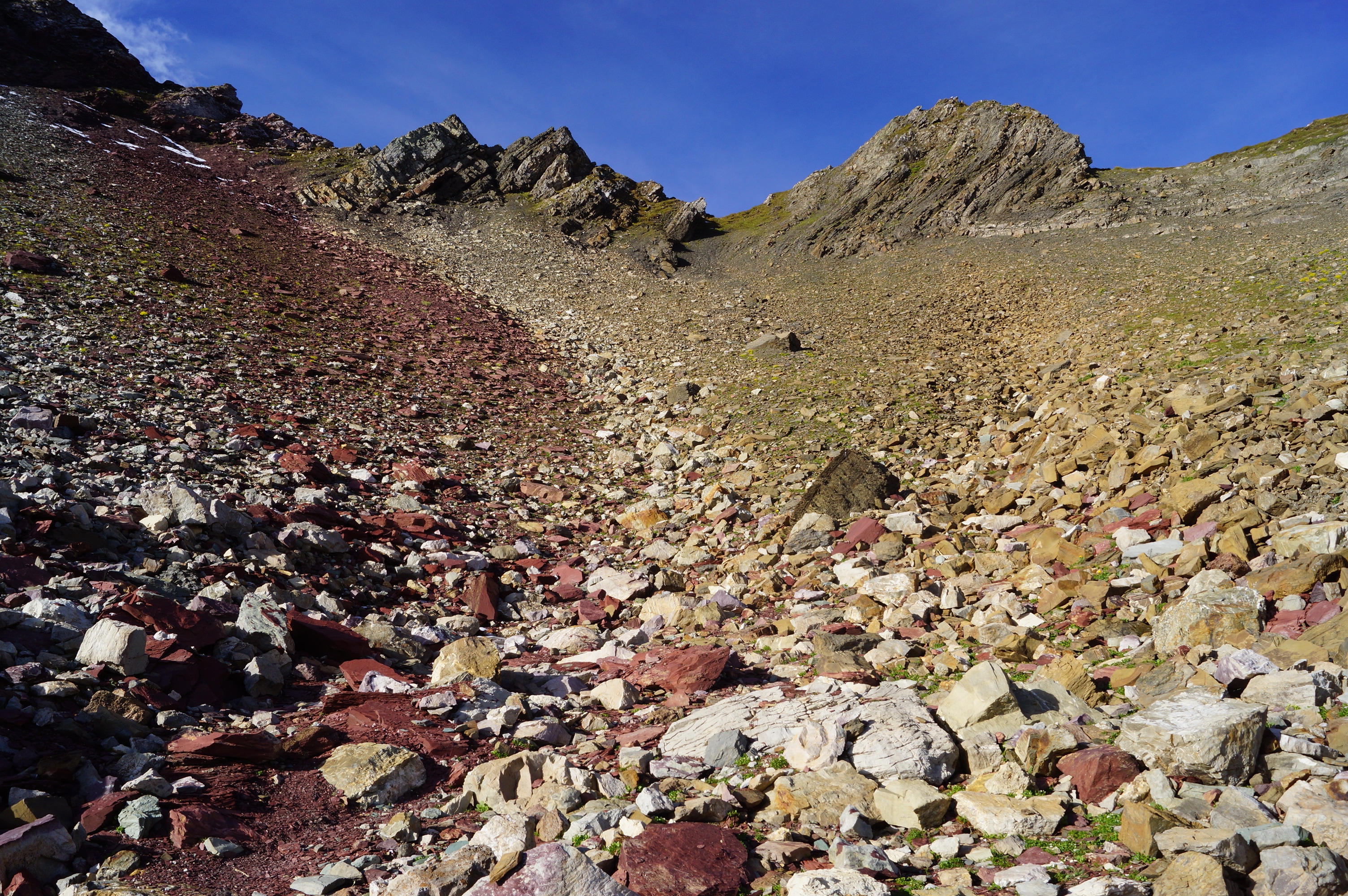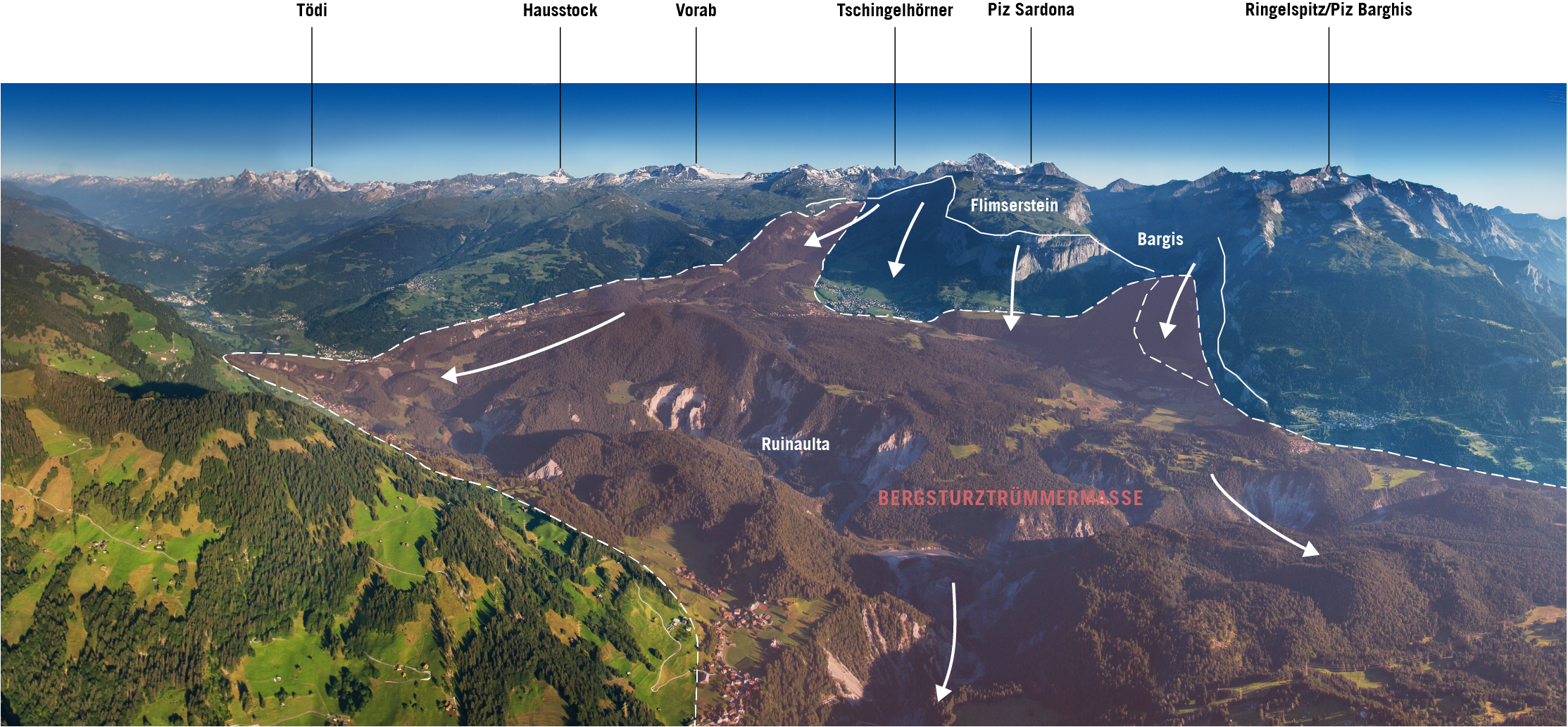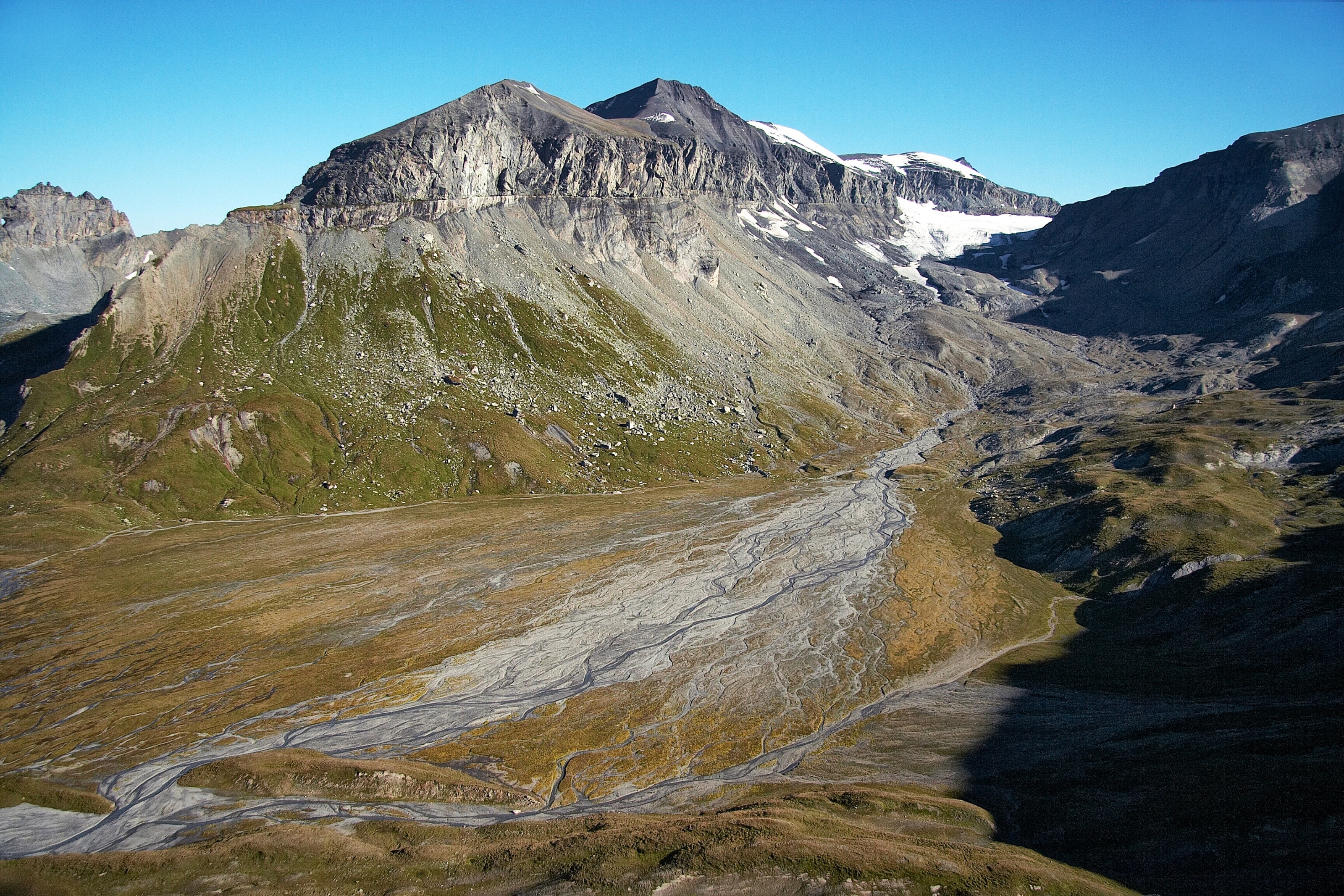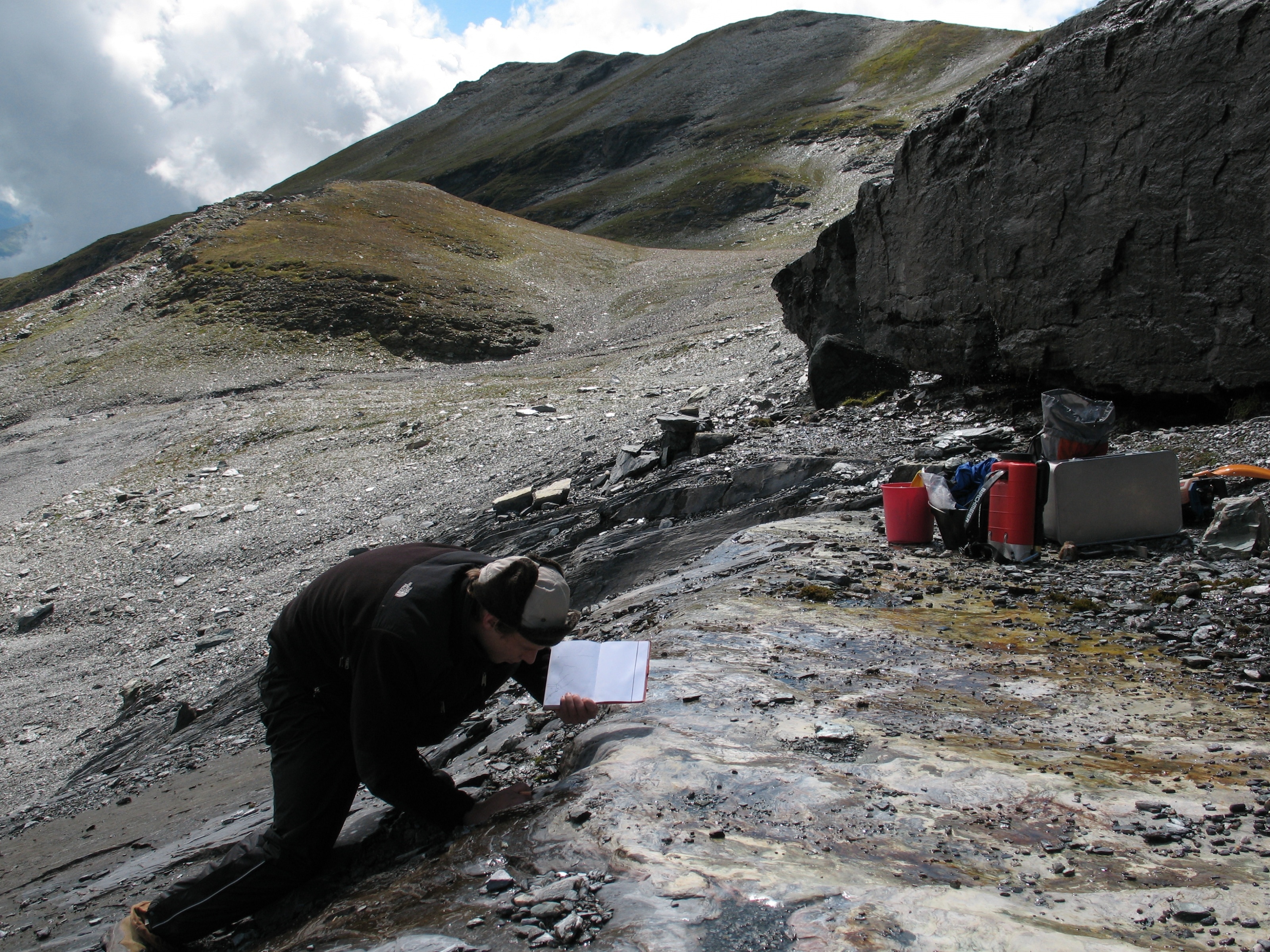What do you know about the formation of our mountains?
Experience the modern day perspective on the formation of the Alps – a huge crumple zone, formed by the collision of Europe and Africa.
The mountains shape the landscape of Switzerland. Yet we know very little about their origin. Mountains and valleys were created over almost unimaginably long periods of time. In them we discover traces of foreign, long since past deserts and seas. Fossils tell us about the former biodiversity. Learn more about the formation of the Alps and the World Heritage Sardona.
flyers and brochuresschool sciencehike descriptions
Piz Sardona and the Glarus Thrust
The “magic line” of the Glarus Thrust is clearly visible on the peaks all around the 3056-metre-high Piz Sardona.
This line represents a huge thrust surface, which was once formed deep within the earth. The rocks below and above this area are completely different, with an age difference of up to 200 million years! But that’s not all: the older rock is on top – the mountains are upside down around here!
In some places you get the feeling of being in the middle of an arena. That is why the Tectonic Arena Sardona around Piz Sardona is so unique. In addition, the rock layers here are particularly clear evidence of how the mountains were formed.
detailed information
Flims rockslide – how a mountain crumbles
Rockslides move several million cubic metres of rock in minutes and thus contribute to the formation of the Alps.
The Flims rockslide is the largest rock avalanche in the Alps. An estimated 9450 years ago, around 10 cubic kilometres of rock thundered down into the valley. We do not know exactly what caused the rockslide, but the effects must have been felt far into the lowlands. In addition to the Flims rockslide, there are many other forms of erosion in the region, such as the removal of rock material by glaciers.


